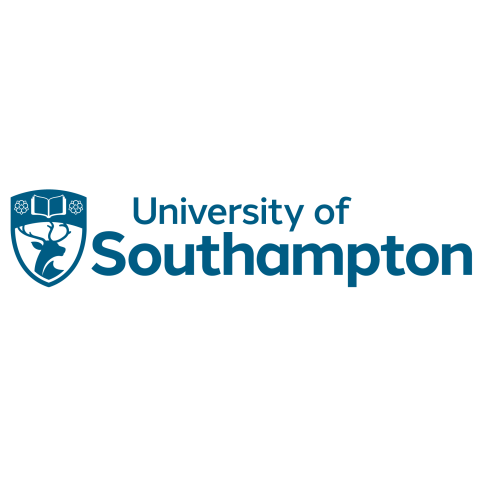
The language of inclusivity is not inclusive
Terms such as equity, diversity and inclusion give the impression that they are dealing with what is present. In fact, EDI work deals with what is absent, writes Pascal Matthias. He offers ways to think, speak and write differently
Equality
Diversity
Inclusion
Equity
Equality, diversity and inclusion (EDI)
Equity, diversity and inclusion (EDI)
Equity and inclusion
Diversity and inclusion
Equality, diversity and inclusion and social justice
Justice, equity, diversity and inclusion (JEDI)
When I present an equality, diversity and inclusion session, my opening question is often: “What does EDI mean?” Many can recount the acronym; most can explain in the broadest terms what equality, diversity and inclusion mean. Many explanations have little consensus, however; they are vague and, it could be argued, idealistic. It is the idealism that not only hinders EDI efforts but decelerates their impact in institutions.
The language (for the purposes of this piece, I will use EDI for consistency) is problematic at best; at its worst, it demonstrates historical, social and linguistic shortcomings. The term is a well-meaning attempt to highlight key areas of focus in order to make this work comprehensible. But it is not inclusive to use an acronym for a term that, in its essence, is intended to address issues of systemic and systematic discrimination in higher education institutions (HEIs).
- The 10 steps towards inclusivity in universities
- Embracing inclusivity with ‘y’all’: why this pronoun deserves a fresh look
- So you don’t think microaggressions have an impact?
To drive forward with inclusion, we must use inclusive language. We must use language that is clear, consistent and comprehensible. This applies not only to individuals working in the EDI space but to all who centre equality, diversity, inclusion and social justice within their institutions or organisations.
EDI deals with the absence of equity, diversity and inclusion
EDI as a term is oxymoronic, especially in education. It does not deal with equality; it deals with inequality. Similarly, it does not deal with diversity or inclusion; it deals with a lack of diversity and inclusivity. These terms give the impression that they are dealing with what is present; in fact, EDI work deals with what is absent.
EDI is a statement of intent. The fundamental shortcoming of language will always hold EDI as an option, and not as essential for not only higher education but all education and society. The lack of governance over language allows HEIs to adopt and inherit terminology that is in many cases more exclusive than inclusive.
So, what can universities do about this adopted and inherited terminology?
EDI work must accept, acknowledge and explore how social inequality is in large part embedded by and enabled by non-inclusive language. Non-inclusive policies, practices and procedures that do little to question the foundations and language on which they are built will perpetuate the same outcomes. As language changes, organisations must adapt. It is common to still come across language that polarises, marginalises and minoritises according to characteristics such as gender, class, disability, race and age.
The multitude of EDI terms encourages ambiguity and an abstractness that is dangerous for those directly affected. Where EDI will often mention equality, it will fail to mention equity. Equality suggests that all people are treated equally. Equity is a recognition of individual needs. Equality could be described as an awareness of what is required, where equity is an acknowledgement of what is required. The difference is subtle but important.
The terminology extends beyond EDI and its definitions to incorporate vocabulary such as BAME. When Black, Asian and minority ethic is casually acronymised, it strips away meaning that exists within the term. BAME is a term many students and staff feel uncomfortable with, but it is consistently used. Many inclusive employers ceased using the term after the murder of George Floyd in 2020. The endeavour for many institutions and organisations is to find alternative options that are inclusive for all lived experiences.
Terminology such as male or female, ethnic minorities, international students, home students and disadvantaged students can act as a divisive tool in how institutions both think and act around EDI strategy. Other terms like “global majority” may indicate an alternative assessment, but even this term feeds into the challenges of working in EDI and making sure the language used in EDI work is aligned to EDI objectives. Terms such as BAME, “minorities” and “international” only further marginalise, polarise, isolate and minoritise staff and students.
International, for example, is used to describe students from overseas or outside the home country. The use of language referring to home students (as opposed to international students) creates a division not only in how an institution views a student but also how a student views themselves. I am not advocating that we homogenise language but rather acknowledge the importance of language in how marginalised groups as well as groups with protected characteristics can feel. How can our language help everyone feel seen, safe and supported?
Language that enables one group while opposing another
Subtleties of language, such as a prefix, can be as damaging as acronyms and more overtly discriminatory. Vocabulary such as “disadvantaged group”, “under-represented group”, disabled professor or early career researcher, it could be argued, enables one position while simultaneously conceding an oppositional disposition. The deficit serves to disempower. It could be argued that some of these terms are helpful. What the terms also do is position EDI work as oppositional, and it is not. If the language does not promote inclusivity in its structure, then it will often serve as a tool to suppress and disadvantage certain groups.
This deficit can reveal itself in a self-fulfilling prophecy that, say, if you are labelled as possessing a disadvantage, an extra burden is placed on you that more empowered groups do not have to consider, let alone carry.
Angela Carter said that “language is power, life is the instrument of culture, the instrument of domination and liberation”. EDI work can and should be a liberation. Often EDI work can be seen as only a prevention or intervention of acts and thoughts that promote social injustice.
Another way forward for EDI is where it is embedded so deeply within a culture that the way we think, act and speak reflects inclusive values. This is by no means an easy thing to achieve. It can be achieved if EDI adopts a greater sense of awareness in what is being communicated as much as why. For EDI to be impactful, an individual and collective audit is required to assess how EDI is embedded in how we operate in our respective institutions. This also goes beyond vocabulary and includes syntax and tone.
The title of Audre Lorde’s essay collection – The Master’s Tools Will Never Dismantle the Master’s House – is apt. It is a fitting and cautionary way to review how reflective, innovative and inclusive the language of EDI must be. If we continue to use traditional methods devoid of creative thinking, analysis and evaluation, we may never reach the outcomes that are so desperately needed in educational spaces.
To further EDI work we must reassess and ask: is the language we use in practice a tool for liberation or a harness of limitation?
Pascal Matthias is associate vice-president (EDI and social justice) and a senior teaching fellow in fashion marketing and management in the Winchester School of Art at the University of Southampton.
If you would like advice and insight from academics and university staff delivered direct to your inbox each week, sign up for the Campus newsletter.
Additional Links
For more resources on this topic, see our spotlight on how universities can boost staff diversity.




